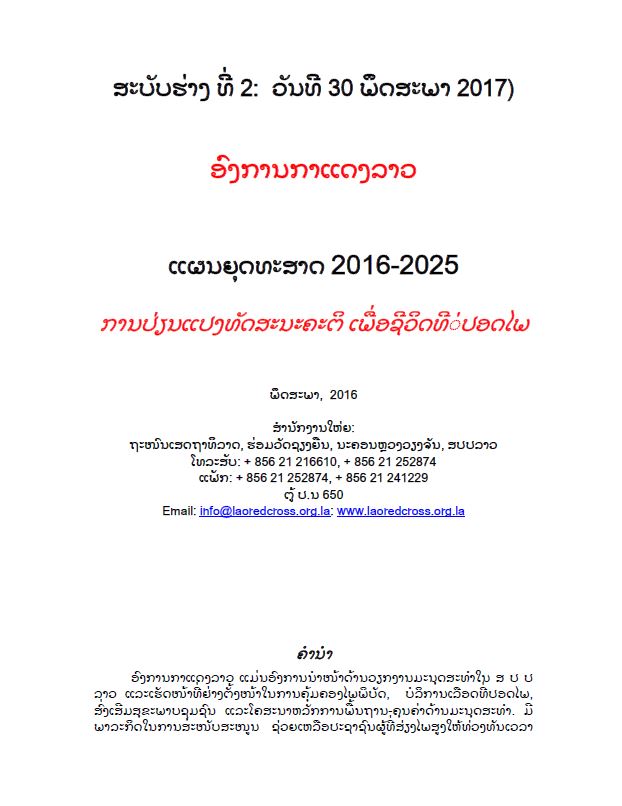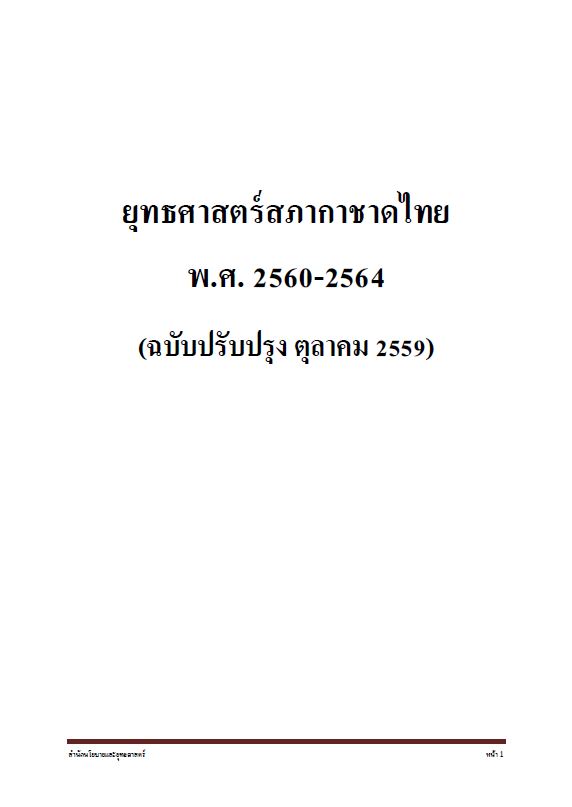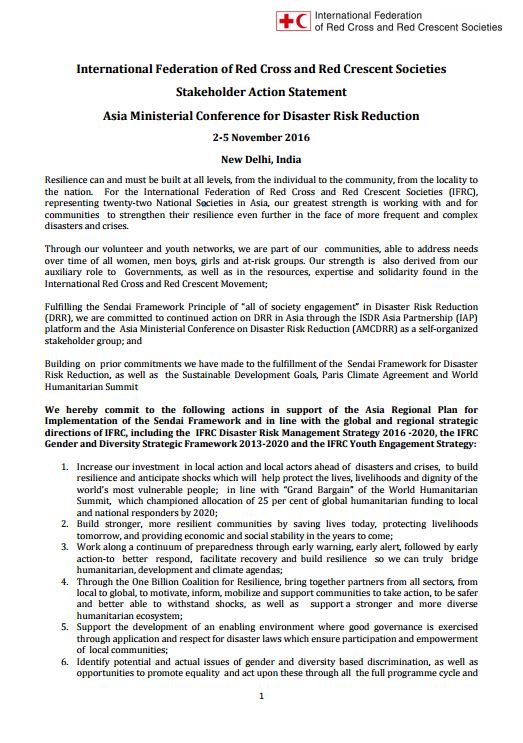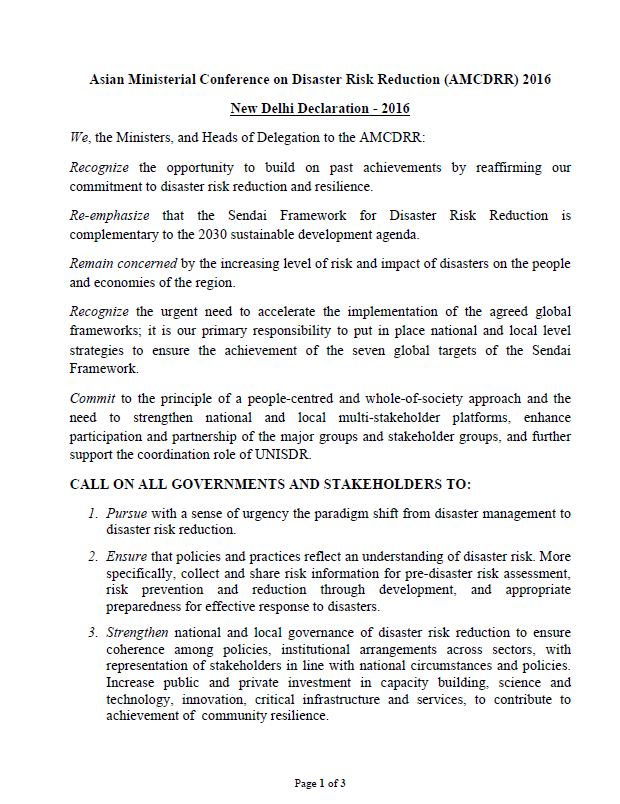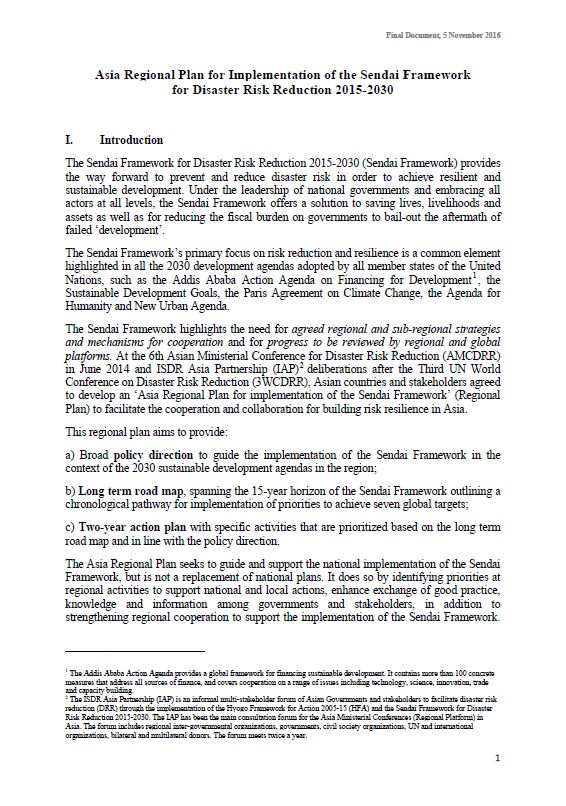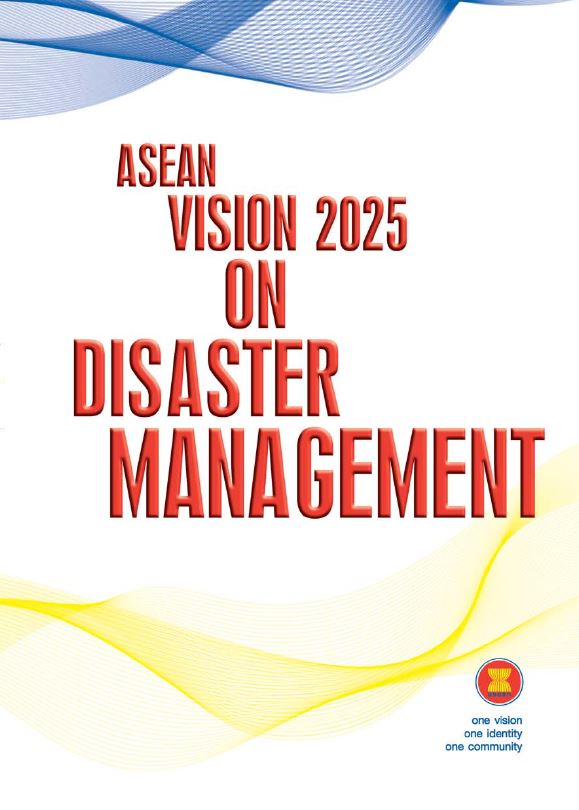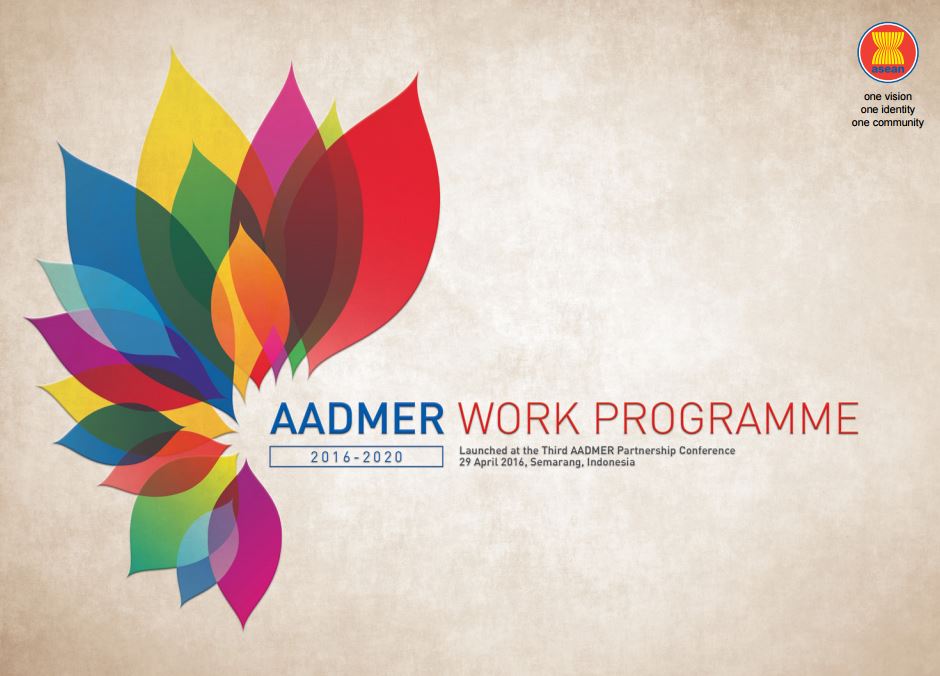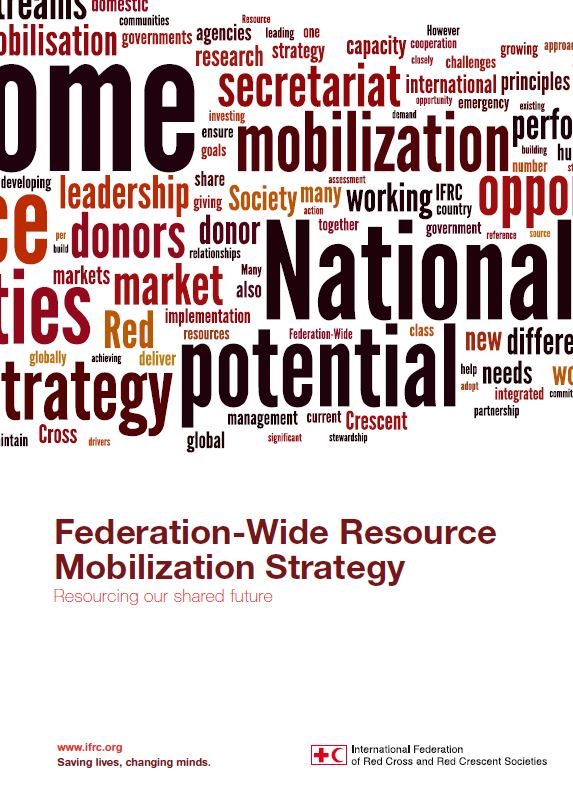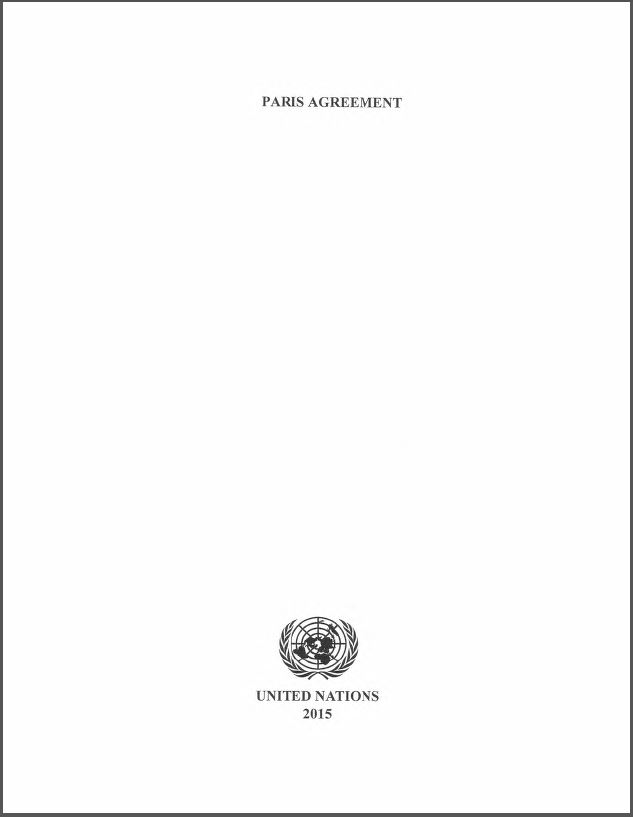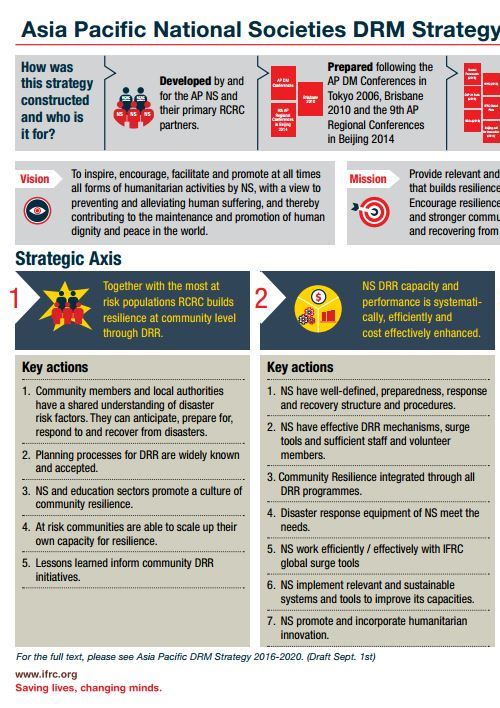IFRC Stakeholder Action Statement in AMCDRR
Purpose:
The IFRC’s Statement of Action, sets out the collective commitments and actions that Red Cross and Red Crescent National Societies across Asia will deliver according to the priority areas of the Sendai Framework.
These include providing greater support to local humanitarian and development actors, addressing issues around social inclusion and diversity in disaster risk reduction, establishing stronger laws and frameworks that reduce vulnerability to disasters and elevating the role of young people as agents of behavioural change in their communities.
Usage: Policy reference
Audience: National Society leaders and disaster risk management managers.
![]()
New Delhi Declaration 2016 – Asian Ministerial Conference on Disaster Risk Reduction (AMCDRR) 2016
Purpose:
The New Delhi Declaration adopted on 5 November 2016 in New Delhi, India, in the AMCDRR 2016, consolidates the political commitment of governments towards preventing and reducing risk as well as strengthening resilience by accelerating implementation and monitoring of the Sendai Framework in the region.
Usage: Policy reference
Audience: National Society leaders and disaster risk management managers.
![]()
Asia Regional Plan for Implementation of the Sendai Framework for Disaster Risk Reduction 2015-2030
Purpose:
The Asia Regional Plan seeks to guide and support the national implementation of the Sendai Framework, but is not a replacement of national plans. It does so by identifying priorities at regional activities to support national and local actions, enhance exchange of good practice, knowledge and information among governments and stakeholders, in addition to strengthening regional cooperation to support the implementation of the Sendai Framework.
This regional plan aims to provide:
- Broad policy direction to guide the implementation of the Sendai Framework in the context of the 2030 sustainable development agendas in the region;
- Long term road map, spanning the 15-year horizon of the Sendai Framework outlining a chronological pathway for implementation of priorities to achieve seven global targets;
- Two-year action plan with specific activities that are prioritized based on the long term road map and in line with the policy direction.
This regional plan is one of the main outcome documents of the AMCDRR in November 2016 in New Delhi, India.
Overview:
The regional plan details, among which,:
- The policy direction for implementation of the Sendai Framework in Asia at the regional, national and local levels: (i) Coherence and integration (ii) Guiding principles and (iii) Enabling environment.
- The Road Map for implementation of the Sendai Framework in Asia, with the key milestones by 2016, 2018, 2020, 2022 and 2030.
- Two-year Action plan (2017-2018) through regional, national and local level actions
- Implementation and monitoring of the Asia Regional Plan
Usage: Policy reference
Audience: National Society leaders and disaster risk management managers.
![]()
ASEAN Vision 2025 on Disaster Management
Purpose:
This document maps out the broad strategic direction that will guide the implementation of ASEAN Agreement on Disaster Management and Emergency Response (AADMER)over the next ten years.
The AADMER, which came into force in December 2009, set the foundation for regional cooperation, coordination, technical assistance, and resource mobilisation in all aspects of disaster management and emergency response. The Agreement supports ongoing and planned national initiatives of ASEAN Member States, and with supporting and complementing national capacities and existing work programmes. Since its inception and through various initiatives, ASEAN through AADMER has managed to increase both regional and national capacities for responding to disasters in Southeast Asia.
Overview:
The document discusses:
- The further institutionalisation of AADMER is a strategic element that identifies the need for a multi-layered and cross-sectoral governance approach driving the integration of the ASEAN Socio-Cultural Community, the ASEAN Economic Community and the ASEAN Political Security Community on disaster management and emergency response. The first section of the document assesses the challenges around institutionalisation and key considerations for the implementation of AADMER.
- The second strategic element on financial and resource mobilisation associated with the implementation of AADMER involving ASEAN Member States, ASEAN Secretariat, and the AHA Centre, pinpoints that the strategy needs to combine an increase in ASEAN Member States’ contributions with traditional and non-traditional sources of funding and other modalities of support, while still ensuring that the process and content is driven by ASEAN. The second section of the document focuses on financial and resource mobilisation challenges associated with the implementation of AADMER
- The final strategic element focuses on partnerships and priorities innovative ways in which bodies responsible for implementing AADMER can work together with nontraditional partners for disaster management and emergency response. This section highlights the strengths of partnering with entities at regional, national, and local levels in the public, private and people sectors.
Through these three mutually-inclusive strategic elements, this policy document proposes to position ASEAN as a pioneer in transforming disaster management landscape in the Southeast Asian region and beyond, and strengthen its leadership to maintain ASEAN Centrality.
![]()
AADMER Work Programme 2016-2020
Purpose:
The work programme was launched in the 3rd AADMER Partnership Conference in April 2016, Semarang, Indonesia.
The ASEAN Agreement on Disaster Management and Emergency or AADMER has been effectively facilitating regional cooperation between and among ASEAN Member States since its entry into force on 24 December 2009. As the legally-binding regional agreement in ASEAN, AADMER has directly contributed to the building of ASEAN Community, and the enhancement of disaster risk reduction and climate change adaptation of the
peoples and communities in ASEAN.
In the next ten years, the vision of ASEAN on disaster management looks at three strategic elements:
- Institutionalisation and Communications;
- Partnership and Innovations;
- Finance and Resource Mobilisation.
The AADMER Work Programme 2016-2020 differs from the previous work programme in terms of having a more pronounced articulation of protecting the gains of ASEAN Community integration for the peoples and communities of ASEAN, and showcasing ASEAN’s leadership and experience. It continues to put the premium on the contribution to and ownership of ASEAN Member States of the initiatives embodied in the new work programme; and the significance of engaging multiple sectors and stakeholders while maintaining ASEAN Centrality to ensure policy and programme coherence.
Overview:
The 8 Priority Programmes, with the specific objectives and outputs outlined in this work plan, are:
- AWARE: Risk aware ASEAN Community
- BUILD SAFELY: Building safe ASEAN infrastructures and essential services
- ADVANCE: A Disaster resilient and climate adaptive ASEAN community
- PROTECT: Protecting economic and social gains of ASEAN community integration through risk transfer and social protection
- RESPOND AS ONE: Transforming mechanisms for ASEAN’s leadership in response
- EQUIP: Enhanced capacities for one ASEAN one response
- RECOVERY: ASEAN resilience recovery
- LEAD: ASEAN Leadership for Excellence and Innovation in Disaster Management
![]()
Federation-Wide Resource Mobilization Strategy
Purpose:
This Federation-Wide Resource Mobilization Strategy (the Strategy) aims to help the Red Cross and Red Crescent (RCRC) National Societies (NS) around the world to build on our strengths and competitive advantages in resource mobilization, while eliminating practices that undermine national and global resource mobilization capacities and objectives.
Working individually and together, we, can maximize resource mobilization opportunities to realize the strategic aims of Strategy 2020 for the International Federation of Red Cross and Red Crescent Societies (IFRC).
Drawn from the enabling actions of Strategy 2020, the goals of the Strategy are to:
- Maintain leadership in resource mobilization for emergencies
- Grow non-emergency income for international and domestic work
- Increase resource mobilization capacity of National Societies (NSs).
Achieving these goals will enable the International Federation of Red Cross and Red Crescent Societies (National Societies and their secretariat) to maintain its position as the world’s largest humanitarian network, ensuring the availability of resources to do more, do better and reach further.
Overview:
The Strategy is driven by five critical challenges that the IFRC must address to remain the world’s leading humanitarian network:
- Increased competition for emergency income
- Low growth in non-emergency income
- Domestic income challenges
- Working in partnerships
- Weak capacity building
The Strategy is informed by the following guiding principles:
- maximize unrestricted income but not at the expense of growing overall income
- take donor interests into account and provide effective stewardship
- make concrete one Red Cross and Red Crescent to maximize funding potential
- ‘best-placed person/organisation’ makes approach on donor
- use evidence-based decision making: globally and locally in resource mobilisation and fundraising
- establish measurable resource mobilisation performance targets
- measure expenditure related to cost of resource mobilisation activity and maintain the return on investment (ROI) within acceptable industry standards.
Usage: Policy reference
Audience: National Society leaders
![]()
Paris Agreement
Purpose:
The Paris Agreement builds upon the Convention and – for the first time – brings all nations into a common cause to undertake take ambitious efforts to combat climate change and adapt to its effects, with enhanced support to assist developing countries to do so. As such, it charts a new course in the global climate effort.
The Paris Agreement’s central aim is to strengthen the global response to the threat of climate change by keeping a global temperature rise this century well below 2 degrees Celsius above pre-industrial levels and to pursue efforts to limit the temperature increase even further to 1.5 degrees Celsius. Additionally, the agreement aims to strengthen the ability of countries to deal with the impacts of climate change. To reach these ambitious goals, appropriate financial flows, a new technology framework and an enhanced capacity building framework will be put in place, thus supporting action by developing countries and the most vulnerable countries, in line with their own national objectives. The Agreement also provides for enhanced transparency of action and support through a more robust transparency framework.
Overview:
In November and December 2015, the 21st Conference of the Parties to the United Nations Framework Convention on Climate Change (UNFCC COP21) took place in Paris. UNFCC is an international environmental agreement on climate change, of which there are 195 States Parties. The agreement is due to come into force in 2020.
Some key points of the agreement:
Mitigation: reducing emissions. Governments agreed:
- A long-term goal of keeping the increase in global average temperature to well below 2°C above pre-industrial levels;
- To aim to limit the increase to 1.5°C, since this would significantly reduce risks and the impacts of climate change;
- On the need for global emissions to peak as soon as possible, recognising that this will take longer for developing countries;
- To undertake rapid reductions thereafter in accordance with the best available science.
Before and during the Paris conference, countries submitted comprehensive national climate action plans (National Determined Contributions – NDCs). These are not yet enough to keep global warming below 2°C, but the agreement traces the way to achieving this target.
Transparency and global stock take. Governments agreed to:
- Come together every 5 years to set more ambitious targets as required by science;
- Report to each other and the public on how well they are doing to implement their targets;
- Track progress towards the long-term goal through a robust transparency and accountability system.
Adaptation. Governments agreed to:
- Strengthen societies’ ability to deal with the impacts of climate change;
- Provide continued and enhanced international support for adaptation to developing countries.
Loss and damage. The agreement also:
- Recognizes the importance of averting, minimizing and addressing loss and damage associated with the adverse effects of climate change;
- Acknowledges the need to cooperate and enhance the understanding, action and support in different areas such as early warning systems, emergency preparedness and risk insurance.
Support
- The EU and other developed countries will continue to support climate action to reduce emissions and build resilience to climate change impacts in developing countries.
- Other countries are encouraged to provide or continue to provide such support voluntarily.
- Developed countries intend to continue their existing collective goal to mobilize USD 100 billion per year until 2025 when a new collective goal will be set.
For more information, see UNFCCC website and e-handbook (explanation) on the Paris Agreement
![]()
Asia Pacific National Societies DRM Strategy towards Community Resilience 2016-2020
Purpose:
This Strategy is intended to support National Societies (NS) strategic decision-making and planning as well as align local and national level disaster risk reduction. Having a region-wide alignment of actions will allow NS to work better together and support each other in times of disasters and crisis. This document will also support the planning of IFRC Secretariat Support to NS at various stages of the NS Development.
Overview:
The Strategy outlines four strategic directions and lists a set of key actions with some examples of associated impact and indicators to measure progress towards achieving the stated directions. Each National Society will contextualize this strategy to fit into their humanitarian challenges, their identified needs and priorities as well as capacities.
The strategy has 4 strategic axes:
- Strategic Axis 1: Together with the most at risk populations Red Cross Red Crescent builds resilience at community level through Disaster Risk Reduction.
- Strategic Axis 2: National Society Disaster Risk Reduction capacity and performance is systematically, efficiently and cost-effectively enhanced.
- Strategic Axis 3: Ensuring an effective local, national, regional, and global disaster response that contributes to Disaster Risk Reduction and strengthens community resilience.
- Strategic Axis 4: Institutionalizing strategic partnerships at all levels within the RCRC Movement and with external partners.
Usage: Policy reference
Audience: Asia Pacific National Societies
See the document: Strategy | Annex 1 (log frame) | One-pager [all DRAFT of 1 Sep 2016]
- Note: Annex 1 (log frame) detailing key actions, what impact we expect, indicator to measure progress, special attention and available tools for each of the Strategic Axes [Draft 1 Sep 2016]
![]()


